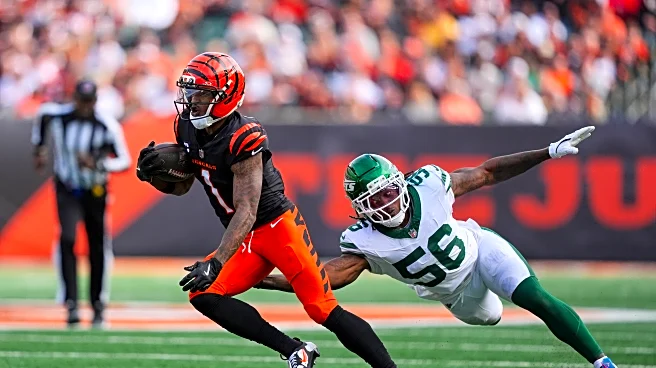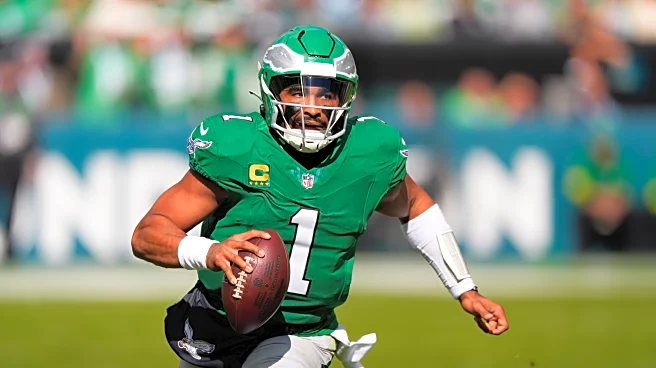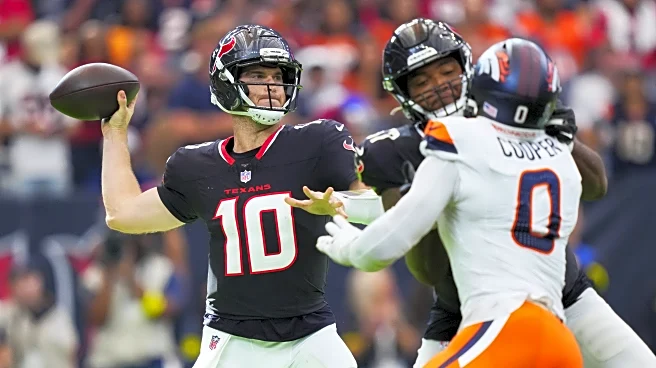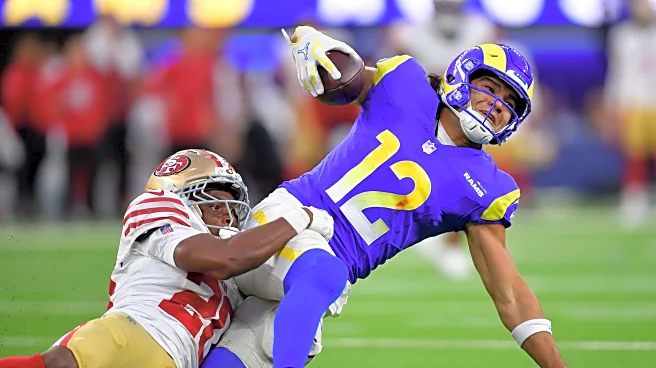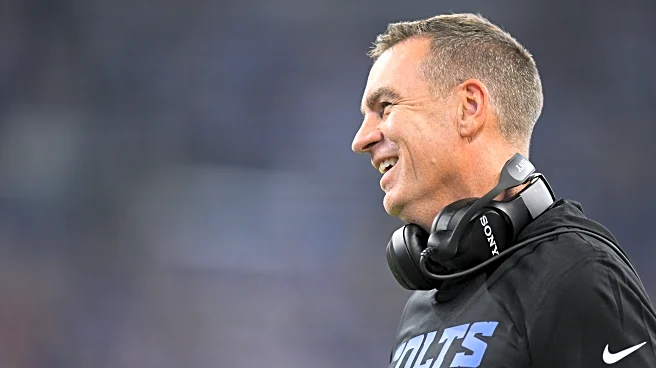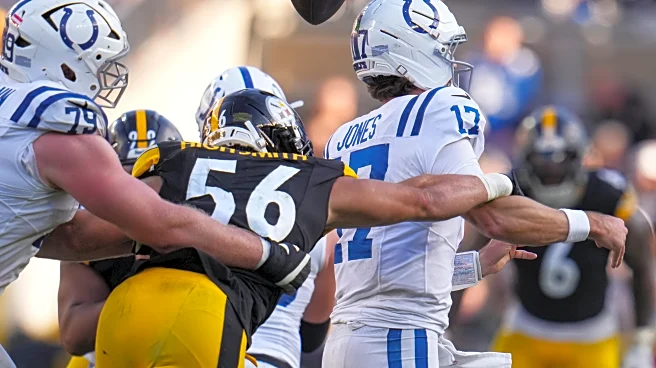What's Happening?
Daniel Jones, who requested his release from the New York Giants in November 2024, has emerged as the starting quarterback for the Indianapolis Colts. After signing a one-year, $14 million deal with the Colts, Jones has excelled in Shane Steichen's offense,
leading the NFL with 2,404 passing yards and guiding the Colts to a 7-2 record. His performance is set to earn him a significant contract extension in the 2026 offseason. Jones has surpassed expectations, outperforming Anthony Richardson, the 2023 No. 3 overall pick, and benefiting from a strong supporting cast including Jonathan Taylor and Michael Pittman Jr.
Why It's Important?
Jones' success with the Colts highlights the potential for quarterbacks to revive their careers with the right team and system. His anticipated contract extension reflects his value as a top-tier quarterback, impacting the Colts' future roster decisions and financial planning. The Colts' approach of investing in a capable quarterback without overspending allows them to maintain a competitive roster, a strategy mirrored by teams like the Buccaneers and Seahawks. This development could influence how NFL teams manage quarterback contracts and roster building.
What's Next?
Jones is expected to negotiate a contract extension with the Colts, potentially securing a deal similar to those of Baker Mayfield and Sam Darnold, who received three-year contracts averaging around $33 million annually. The Colts' decision to trade for Sauce Gardner suggests confidence in Jones as their long-term quarterback, reducing the need for high draft picks to address the position. The team's strategy of balancing quarterback costs with roster strength may continue to shape their competitive edge.
Beyond the Headlines
Jones' journey from a backup to a starting quarterback underscores the importance of adaptability and resilience in professional sports. His ability to thrive in a new environment highlights the significance of team dynamics and coaching in player development. The Colts' investment in Jones reflects broader trends in the NFL, where teams seek to optimize performance without compromising financial flexibility.




